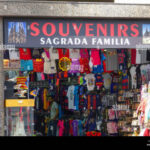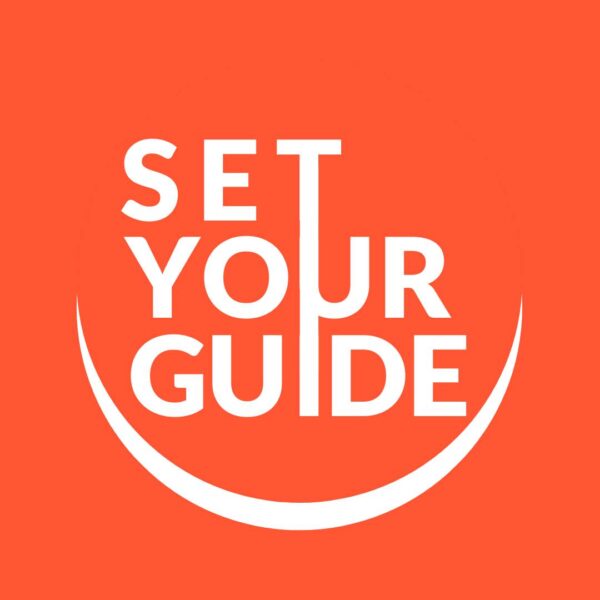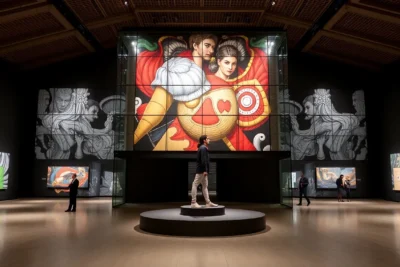
Barcelona, a city renowned for its rich architectural heritage, is home to one of the most iconic structures in the world: the Sagrada Familia. This breathtaking basilica, designed by the visionary architect Antoni Gaudí, captivates millions of visitors each year with its intricate details and unique style.
In this article, we invite you on a visual exploration of this architectural marvel. Join us on **The Magnificent Sagrada Familia in Barcelona, Spain: A Pictorial Journey**, where we will delve into the stunning artistry and profound symbolism that make the Sagrada Familia a true masterpiece of modernist architecture.
Exploring the Architectural Marvel of the Sagrada Familia in Barcelona
The Sagrada Familia stands as a testament to Antoni Gaudí's innovative vision and dedication to architectural excellence. This iconic basilica, still under construction after more than a century, showcases a perfect blend of Gothic and Art Nouveau styles. Its intricate façades tell biblical stories, while inside, the play of light through stained glass creates an ethereal atmosphere that enchants visitors.
As you explore the Sagrada Familia, you will encounter several key features that highlight its architectural brilliance:
- Nativity Façade: A celebration of Christ's birth, adorned with sculptural details that reflect joy and life.
- Passion Façade: A stark contrast, emphasizing the suffering of Christ, with angular forms and dramatic shadows.
- Interior Columns: Resembling trees, these pillars support the structure while enhancing the organic feel of the basilica.
The ongoing construction of the Sagrada Familia is a remarkable feat of engineering, utilizing modern technology alongside Gaudí's original plans. The anticipated completion date, set for 2026, marks the centenary of Gaudí's death, which adds a poignant layer to this monumental project. Visitors can witness the evolution of this architectural marvel and appreciate the dedication to craftsmanship that continues to this day.
In conclusion, the Sagrada Familia is more than just a tourist attraction; it is a living symbol of artistic legacy and spiritual aspiration. The journey through this magnificent structure offers not only a glimpse into Gaudí's creative genius but also a deeper understanding of the cultural and historical significance of Barcelona itself.
The Symbolism Behind the Colors of the Sagrada Familia's Facades
The façades of the Sagrada Familia are not only visually striking but are also steeped in profound symbolism, particularly through their use of color. Each hue is carefully chosen to evoke specific emotions and convey deeper theological meanings. For instance, the Nativity Façade features vibrant colors that symbolize joy, life, and the birth of Christ, inviting visitors to experience a sense of celebration.
In contrast, the Passion Façade employs a more muted and monochromatic palette. This choice reflects the solemnity of Christ's suffering, utilizing somber tones to create a feeling of introspection and reverence. The sharp angles and stark shadows further enhance this emotional impact, drawing worshippers into a contemplation of sacrifice and redemption.
Additionally, the colors used in the Sagrada Familia can be categorized into three thematic groups:
- Warm Colors: Symbolizing life and creation, found on the Nativity Façade.
- Cool Colors: Representing pain and suffering, prevalent in the Passion Façade.
- Neutral Colors: Found throughout the interior, symbolizing peace and spirituality.
Ultimately, the interplay of colors in the Sagrada Familia's façades is a reflection of Gaudí's intent to merge art with spirituality. By carefully selecting hues that resonate with biblical narratives, he invites visitors to embark on a journey of faith and introspection, making each visit a uniquely enriching experience.
A Historical Overview of the Sagrada Familia: From Vision to Reality
The Sagrada Familia's history began in 1882 when the foundation stone was laid under architect Francisco de Paula del Villar. However, it was the arrival of Antoni Gaudí in 1883 that transformed the project into a visionary masterpiece. His ambition was to create a basilica that transcended mere architecture, aiming to embody a profound spiritual journey through its design and symbolism.
Over the decades, the Sagrada Familia has faced numerous challenges, including the Spanish Civil War, which halted construction and led to the destruction of many of Gaudí's plans. Despite these setbacks, restoration efforts and the commitment of subsequent architects have kept the dream alive. Today, the basilica stands as a collaborative endeavor, merging Gaudí's original vision with modern advancements.
Key milestones in the history of the Sagrada Familia include:
- 1882: Foundation stone laid by Francisco de Paula del Villar.
- 1883: Antoni Gaudí takes over as chief architect.
- 1936: Construction halted due to the Spanish Civil War.
- 2026: Anticipated completion date, marking 100 years since Gaudí's passing.
As it continues to rise above the Barcelona skyline, the Sagrada Familia serves not only as an architectural marvel but also as a testament to human perseverance and creativity. Each stone laid is a tribute to Gaudí’s original vision and the countless hands that have contributed to its realization over the years.
Visiting the Sagrada Familia: Tips for an Unforgettable Experience
When planning your visit to the Sagrada Familia, consider purchasing your tickets online in advance. This will help you avoid long queues and ensure you have a designated time slot to explore this magnificent basilica. Additionally, it’s advisable to choose a guided tour to enrich your experience with informative insights about Gaudí's vision and the basilica’s artistic details.
To make the most of your visit, aim to arrive early in the morning or later in the afternoon. These times often see fewer crowds, allowing you to appreciate the beauty and tranquility of the Sagrada Familia. Don’t forget to take your time to enjoy the stunning stained glass windows, which create a dazzling play of light throughout the interior.
While visiting, be mindful of the dress code as it is a place of worship. Ensure you wear respectful attire, covering shoulders and knees. To enhance your experience further, consider bringing a camera to capture the breathtaking views, but remember to be respectful of the space and fellow visitors.
Finally, allow yourself time to explore the surrounding area. The Sagrada Familia is nestled in a vibrant neighborhood with charming cafes and shops. After your visit, enjoy a leisurely stroll and indulge in some local cuisine or find a spot to reflect on the incredible artistry you have just experienced at this architectural wonder.
The Artistic Details of Gaudí’s Masterpiece: Inside the Sagrada Familia
Inside the Sagrada Familia, visitors are greeted by an array of artistic details that reflect Antoni Gaudí's genius and his deep connection to nature. The interior is designed to evoke a forest, with towering columns that branch out like trees, creating a sense of tranquility and harmony. This organic architectural style not only supports the basilica but also immerses visitors in a serene atmosphere, making them feel as though they are stepping into a sacred woodlands.
The interplay of light and color is another striking feature within the Sagrada Familia. As sunlight filters through the intricate stained glass windows, a stunning spectrum of colors dances across the stone walls. Gaudí meticulously designed these windows to symbolize the various aspects of spirituality, enhancing the overall experience with a celestial glow that changes throughout the day. This dynamic play of light serves not just an aesthetic purpose but also deepens the emotional and spiritual resonance of the space.
Moreover, the artistic details found in the Sagrada Familia's interior are infused with rich symbolism. Each section of the basilica is dedicated to different themes, reflecting Gaudí's interpretation of biblical narratives. For instance, the altar area and apse are adorned with elements that signify resurrection and hope, while the nave showcases motifs that celebrate creation and life. This thoughtful integration of art and spirituality invites visitors to contemplate their own beliefs as they navigate through the sacred space.
Finally, the use of natural materials, such as stone and wood, further emphasizes Gaudí's commitment to sustainability and harmony with the environment. The selection of these materials not only enhances the visual appeal of the interior but also resonates with Gaudí's philosophy that architecture should be a reflection of the natural world. As visitors traverse the Sagrada Familia, they become part of a living canvas that symbolizes the profound relationship between art, nature, and spirituality.
Photographic Highlights: Capturing the Beauty of the Sagrada Familia
When capturing the beauty of the Sagrada Familia, photographers are presented with an array of stunning angles and perspectives. The basilica's unique architectural features create a dynamic canvas, allowing for captivating shots both inside and out. Among the most photogenic areas to explore are:
- The Nativity Façade: Richly adorned with details that invite exploration.
- The Tower Views: Offering breathtaking panoramas of Barcelona.
- The Interior Columns: Resembling a forest, perfect for artistic compositions.
Lighting plays a crucial role in photographing the Sagrada Familia, especially during the golden hours of sunrise and sunset. The interplay of shadows and light enhances the intricate carvings, while the vibrant colors of the stained glass windows create a magical atmosphere inside. Photographers often recommend visiting at different times of day to capture how the changing light transforms this architectural gem.
For those looking to capture the essence of the Sagrada Familia, utilizing various techniques can elevate the photographic experience. Consider experimenting with:
- Long Exposures: To create a dreamy effect of the flowing light from stained glass.
- Wide-Angle Lenses: To encompass the grand scale of the basilica.
- Detail Shots: Focusing on the intricate sculptures and textures.
Finally, patience is essential when photographing the Sagrada Familia. The crowds can be overwhelming at times, but waiting for the right moment can yield stunning results. Whether it’s capturing the essence of spirituality or the grandeur of Gaudí's vision, each photograph taken serves as a reminder of the basilica's lasting beauty and significance in the heart of Barcelona.
 Discover the Perfect Souvenirs at the Sagrada Familia Barca Store in Barcelona
Discover the Perfect Souvenirs at the Sagrada Familia Barca Store in Barcelona From Sagrada Familia to Barcelona Sants: Exploring Barcelona's Architectural Marvels
From Sagrada Familia to Barcelona Sants: Exploring Barcelona's Architectural MarvelsIf you want to know other articles similar to The Magnificent Sagrada Familia in Barcelona, Spain: A Pictorial Journey you can visit the category WHERE YOU CAN GO.
Leave a Reply










Read more!